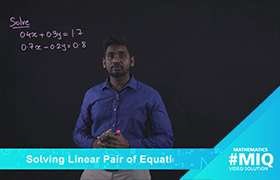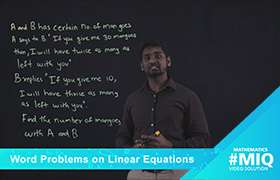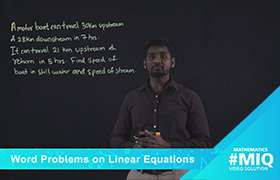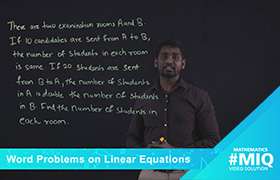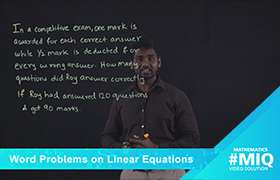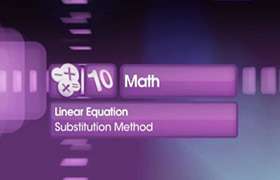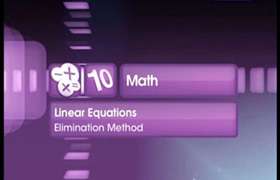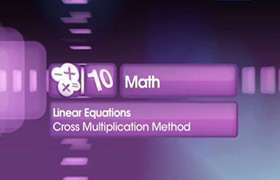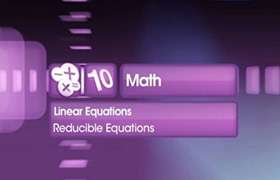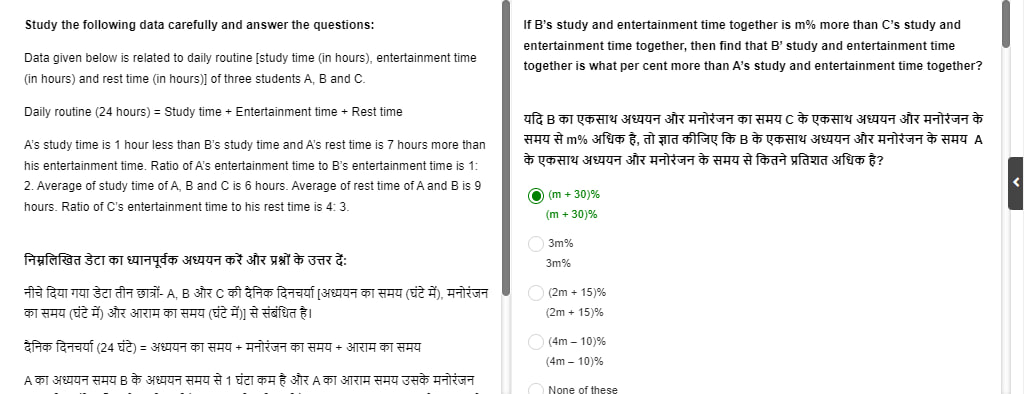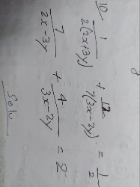CBSE Class 10 Answered
I have a math fa. I have to find a shortcut method to solve a equation in maths . I have to first solve that problem in the way in which the school and then do it in the shortcut method.I have to present it in the polyas way of problem solving. Any example ?
Thank you
Asked by Vishwa | 27 Jun, 2015, 12:00: PM
Suppose we have two linear equations 2x+3y=5 and x+2y=3
We can solve it by either eliminating one of the variables or by eliminating the constand term.
1. In the first method , to eliminate 'x', we multiply the second equation by '2' to get 2x+4y=6. Subtracting the first equation from this we get 'y=1'.
using the is value of 'y' in equation '1', we get 'x=1'.
2. Another way is to eliminate the constant term to get a relation between 'x' and 'y'.
Multiply the first equation by '3'. 6x+9y=15
Multiply the second equation by '5'. 5x+10y=15
Subtracting we get , x-y=0 => x=y=K. Substituting in the first equation we get 5K=5 => K=1. hence, x=y=1
3. Polya's method is not a different method of problem solving. It's a general effective strategy we can use to solve any problem of mathematics.
The steps are as follows:
First principle: UNDERSTAND THE PROBLEM.
In the above proble,, we have two linear equations in two variables. We have to find the values of 'x' and 'y' which will satisfy both the equations.
Graphically, we can say the two linear equations will represent two straight lines in XY plane. The coordinates of the point of intersection will satisfy both the equations as it is a point on both the lines.
Second principle: DEVISE A PLAN
As we can see, there are different methods to solve this problem. We can eliminate one variable and find the other one.
We can use graphical method if graph paper is available.
Or we can eliminate the constant terms from both to relate 'x' and 'y'.
Third principle: CARRY OUT THE PLAN
In the absence of graph paper, we can use either of the 'variable elimination' or 'constant term' elimination method. Since both involve equal amount of calculation steps, the choice depends on convenience. Lets solve by 'variable elimination' method.
2x+3y=5....(1); x+2y=3....(2)
Multiply equation (2) by '2'. 2x+4y=6
Subtracting (1) from this we get y=1.
Substituting the above in (1) we get 2x+3(1)=5 => 2x=5-3=2 => x=1
Fourth principle: LOOK BACK
The solution we have got is x=1 and y=1.
We can put these values in the original equations to verify if they satisfy them or not. This may not be possible always because of time constraint. But if we get some solution which does not make sense by look, then we should cross-check our method and calculation.
Answered by satyajit samal | 30 Jun, 2015, 10:59: AM
Application Videos
Concept Videos
CBSE 10 - Maths
Asked by muttenenimalleswarrao | 29 Mar, 2024, 08:32: PM
CBSE 10 - Maths
Asked by suvarnam458 | 23 Feb, 2024, 06:18: PM
CBSE 10 - Maths
Asked by jhajuhi19 | 01 Feb, 2024, 08:43: AM
CBSE 10 - Maths
Asked by imalakondarayudu1 | 30 Jan, 2024, 06:43: AM
CBSE 10 - Maths
Asked by sbalmeeri | 29 Jan, 2024, 07:19: PM
CBSE 10 - Maths
Asked by am.mansi628 | 29 Nov, 2023, 05:38: PM
CBSE 10 - Maths
Asked by jaanooru | 13 Oct, 2023, 10:23: PM
CBSE 10 - Maths
Asked by mindu2109 | 05 Oct, 2023, 06:19: AM

